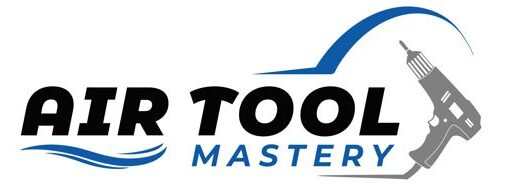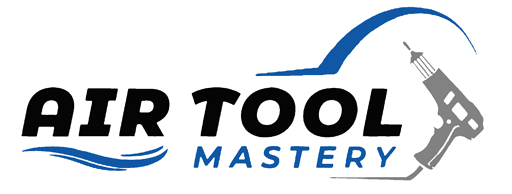Compressed air regulators, or pressure regulators, play a critical role in a variety of pneumatic systems. They function primarily to control and maintain a consistent output pressure, despite variations in the input pressure from the air supply. This is crucial for the smooth operation of pneumatically powered tools and machinery, which require steady and reliable air pressure to function optimally.
In the realm of pneumatic systems, the importance of a compressed air regulator cannot be overstated. A well-functioning regulator not only ensures the longevity and efficiency of your pneumatic tools but also contributes to the overall safety of your operations.
In essence, these regulators act as a protective shield, safeguarding your tools from potential damage caused by excessive pressure while simultaneously improving performance and productivity. With that said, let’s dive deeper into understanding compressed air regulators.
What is a Compressed Air Regulator?
A compressed air regulator is a mechanical device that regulates and controls the output pressure of an air compressor. It acts as a gatekeeper between the high-pressure supply line from the compressor and the downstream pneumatic system. By adjusting the internal spring-loaded valve, the regulator can maintain a consistent output pressure regardless of any variations in the input pressure. This is typically done by bleeding excess air into the atmosphere, allowing only the desired amount of air to pass through.
As we already mentioned, a compressed air regulator essentially consists of an adjustable spring-loaded valve and a diaphragm. The internal mechanism is designed to respond to changes in the input pressure and adjust accordingly to maintain the desired output pressure.
When the supply pressure increases, it pushes against the diaphragm, causing the valve to close and reducing the flow of air through the regulator. On the other hand, when the supply pressure decreases, the spring-loaded valve opens up to allow more air to pass through and maintain a consistent output pressure.
Why is it a Compressed Air Regulator Important?
Compressed air regulators are crucial for maintaining a safe working environment in any pneumatic system. Here’s why:
Protects Equipment
As mentioned earlier, regulators act as a gatekeeper between the compressor and downstream equipment. By maintaining a consistent output pressure, they prevent any damage or premature wear and tear to the equipment.
Increases Efficiency
A regulated air supply ensures that only the necessary amount of air is used for each application, reducing energy consumption and increasing efficiency.
Ensures Safety
In industrial settings, compressed air can reach dangerously high pressures. These high pressures can cause pneumatic tools to malfunction, leading to accidents and injuries. Regulators prevent such incidents by limiting the output pressure to a safe level.
Choosing the Right Regulator
When it comes to selecting a compressed air regulator, there are a few factors to consider:
1. Flow Rate
The flow rate of a regulator determines how much air it can deliver at a given pressure. It’s essential to choose a regulator with a flow rate that can handle the demands of your system.
2. Pressure Range
Different applications require different output pressures. Make sure to choose a regulator with an appropriate pressure range for your specific needs.
3. Material
Regulators come in various materials, such as brass, aluminum, and stainless steel. Consider the environment and conditions in which the regulator will be used to determine the best material for your needs.
4. Accuracy
For precise control over output pressure, look for a regulator with high accuracy. This is especially important for applications that require consistent and accurate pressure levels.
5. Maintenance Requirements
Like any other piece of equipment, regulators need regular maintenance to function properly. Consider the frequency and complexity of maintenance when choosing a regulator.
Maintenance Tips for Compressed Air Regulators
To ensure optimal performance and longevity of your compressed air regulator, regular maintenance is crucial. Here are some tips:
1. Install Filters
Installing filters before the regulator can help prevent contaminants from entering and damaging the internal components.
2. Clean or Replace Filters
Regularly check and clean filters to remove any accumulated debris. If the filter is damaged, replace it immediately.
3. Check for Leaks
Periodically inspect the regulator for leaks, as even small ones can lead to decreased performance and energy waste.
4. Lubricate Moving Parts
To keep the internal components functioning smoothly, lubricate any moving parts according to the manufacturer’s instructions.
5. Replace Worn Parts
When you notice any worn or damaged parts, such as O-rings or diaphragms, replace them promptly to avoid breakdowns and potential safety hazards.
Types of Compressed Air Regulators
There are primarily two types of compressed air regulators: relieving and non-relieving.
Relieving
Relieving regulators, also known as pressure-reducing regulators, are designed to maintain a set output pressure even if there are changes in the input pressure or downstream usage. When the downstream pressure exceeds the set pressure, a relieving regulator expels excess gas to prevent overpressure. This expelled gas is then released via a controlled vent, which can be either open to the atmosphere or piped to a safe location.
They are commonly used in applications where a constant output pressure is important for optimal performance and the system pressure is likely to fluctuate. Note that while relieving regulators can discharge excess pressure, they cannot increase pressure when it falls below the set point. They are particularly beneficial in scenarios where safety is paramount, as they can prevent overpressure conditions that may lead to equipment failure or pose a risk to operators.
Non-Relieving
On the other hand, non-relieving regulators do not have a vent to release excess pressure. Instead, they rely on an internal mechanism that closes off the inlet when the downstream pressure reaches the set point. This prevents any further flow of air until the downstream pressure drops below the set point, allowing more gas to enter.
Non-relieving regulators are commonly used in applications where consistent downstream pressure is not critical and there is minimal risk of overpressure. They are also often used in situations where the compressed air system may be operating near its maximum capacity, as they do not discharge any gas and thus conserve energy.
Key Considerations for Choosing a Compressed Air Regulator
When selecting a compressed air regulator, there are several factors to keep in mind to ensure optimal performance and safety.
Pressure Range
The pressure range of the regulator must be compatible with the application. This includes both the maximum inlet pressure and the desired output pressure. It is important to note that non-relieving regulators typically have a lower maximum inlet pressure than relieving regulators.
Flow Rate
Flow rate, also referred to as capacity, is the maximum amount of air that a regulator can effectively control. It is essential to select a regulator with an adequate flow rate for the specific application to avoid performance issues or potential failure.
Relieving vs. Non-Relieving
As discussed earlier, relieving and non-relieving regulators have different functions and are suitable for different applications. It is crucial to determine which type is most appropriate for your specific needs.
Material Compatibility
The material of the regulator must be compatible with the gas being regulated. This includes both the body and internal components such as seals and diaphragms. Failure to consider material compatibility can result in corrosion, contamination, or malfunction.
Accuracy and Repeatability
Precision in pressure control is critical in many compressed air applications. Regulators should be chosen based on their accuracy and repeatability, which are typically measured as a percentage of the set pressure.
Temperature Range
The temperature range of a regulator must align with the operating environment. Extreme temperatures can affect performance and potentially damage the regulator. Specialized high-temperature regulators may be needed for use in hot environments.
Maintenance Requirements
Regular maintenance is essential to ensure optimal performance and prolong the life of a compressed air regulator. This can include cleaning, lubrication, and part replacement as necessary. Make sure to follow the manufacturer’s recommended maintenance schedule.
Installing and Operating a Compressed Air Regulator
Now that we have covered the important factors to consider when selecting a compressed air regulator, let’s discuss how to properly install and operate one for maximum efficiency.
Installation Steps
- Identify the correct location for installation; it should be as close as possible to the point of use.
- Shut off the air supply and release any remaining pressure from the system.
- Install a shut-off valve before and after the regulator for easy maintenance.
- Use proper fittings and adapters to ensure a secure connection.
- Follow the manufacturer’s instructions for attaching the regulator to your specific air system set-up.
- Connect the necessary gauges and other accessories according to the manufacturer’s recommendations.
- Turn on the air supply and adjust the regulator to the desired pressure.
Operating Tips
- Regularly check for leaks and make adjustments as needed.
- Keep the regulator free of debris and moisture by installing a filter before it.
- Monitor and record the set pressure to ensure it remains at optimal levels.
- Replace any worn or damaged parts immediately.
Conclusion
A compressed air regulator is a crucial component in any pneumatic system. By understanding the different types available and their specific functions, as well as proper installation and maintenance techniques, you can ensure effective and efficient use of your compressed air system.
Remember to always follow the manufacturer’s recommendations and consult with a professional if needed for optimal performance. Thank you for reading our comprehensive guide on compressed air regulators. Remember to always prioritize safety and proper usage when working with compressed air systems.

